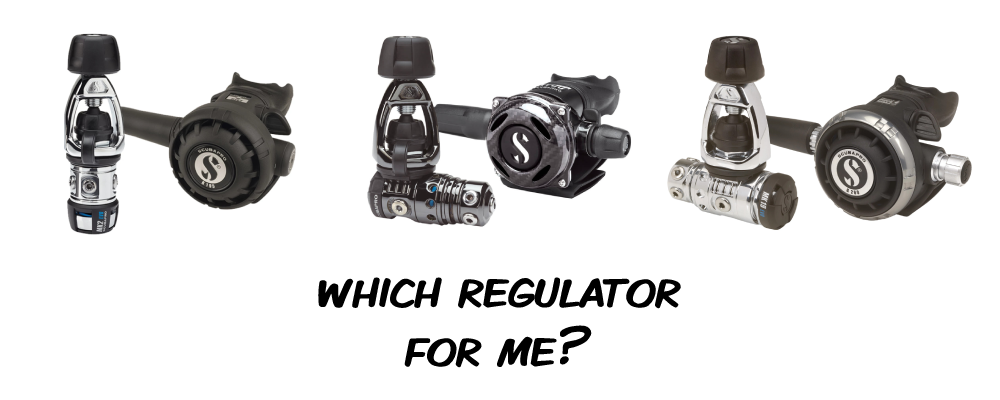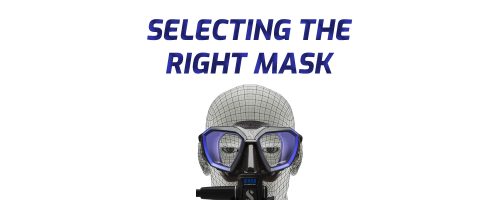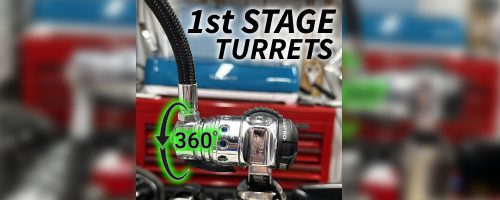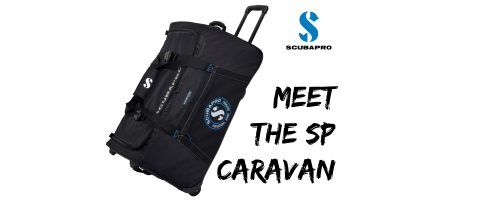Take a second and go hop on any Scuba manufacturer’s website and check out their regulators. Oh my, are there are so many options to choose from with HUGE price differences. This can cause major confusion for a new or even advanced diver. We’re going to discuss the different types of 1st stage regulators, different types of 2nd stages, and the pros/cons of the combos made for purchase.
To start off, my name is Drake Weston. If you don’t already know me, I’m a Scubapro Service Tech here at Extreme Sports and I’m the fortunate one that gets to tear into regulators every day. This allows me to understand how the equipment functions, how to properly take care of the equipment, and create my formulated opinion on the best regulators on the market.
Extreme Sports is a Scubapro platinum dealer specializing in sales, service, and most importantly, the understanding of our what makes our gear premium. Scubapro was founded in 1963 and holds some of the most revolutionary patents in the early developments of Scuba diving, while also making innovative marks today.
1st stage regulators
“You get what you pay for”, right? We’ll sometimes. As a small business, we would love to sell customers the fancy carbon fiber or titanium regulators all day long. However, not every diver needs this equipment. We want to encourage diver’s to keep diving as this hobby is ours too! It can discourage new divers knowing they just spent thousands of dollars on dive equipment that they will no longer use, when they didn’t need it.
The 1st stage regulators job is to reduce or “regulate” high pressure air (from the cylinder), down to a more manageable intermediate pressure for the 2nd stage (roughly around 140psi). The 2nd stage regulators job is to take that 140psi intermediate pressure, and reduce it to ambient pressure (dependent on depth). We all know that as we go deeper, the pressure increases; it is very important to use regulators that are tested in all environments to understand their limits.
When it comes to first stage regulators, we have 2 main types: piston and diaphragm.
Piston 1st Stages:
These styles of 1st stage regulators use a piston, just like in a car to reduce high pressure air (from the cylinder) to an intermediate pressure for the 2nd stage. These regulators are extremely reliable, are quite cheap to maintain, due to the lesser amount of moving parts, and no other type of 1st stage can out “flow” a piston. However, these pistons are assisted by a spring that is exposed to the ambient water, meaning that water enters the 1st stage to assist the spring. This can cause problems in extremely cold water.
Diaphragm 1st stages:
On the other side, we have the king of the cold water. Theses styles of 1st stage regulators use either one or two diaphragms to separate the spring and air delivery section. For example, the Scubapro MK11 is a single diaphragm regulator which still has an exposed balancing chamber, however diaphragms are environmentally sealed meaning water doesn’t enter the “inner mechanism”. The Scubapro MK17 or MK19 has the benefit of having a sealed balancing chamber, meaning water can not enter the regulator and freeze. The MK17/19 can preform in extremely cold temperatures.
For this article, we are not going to discuss the difference between balanced and unbalanced regulators. However, if you’re still wanting to learn more about SCUBA 1st stage regulators and their technology, I would highly recommend watching this video from Rene at Scubapro showing their function and clicking the other link below to read on Scubapro’s technology:
2nd Stage Regulators
Like we stated before, the 2nd stage is responsible for the breath we take. As we know, we breathe roughly 14.7psi of air in the ambient air we are breathing right now. When we go diving and head to 2 atmospheres (33ft), that ambient pressure doubles, making it roughly 29.4psi (dependent on water type). This is what the 2nd stage has to “regulate”. When we take a breath on the 2nd stage on the surface, it is taking that 140psi and reducing it to 14.7psi (dependent on elevation – to be specific). When we dive deeper, it is increasing that pressure, giving us more volume of air for each breath we take. Therefore, our pressure is reduced quicker.
There are multiple “dials” and “knobs” on 2nd stages regulators that can confuse even experienced divers and instructors! When looking at a Scubapro 2nd stage, you might see a dial that a diver can change from “dive” to “pre-dive”. My favorite way to explain this to new students is to think about a gas pump at the gas station. When your tank is full, there is a Venturi Effect that increases pressure in the handle causing it to go “click” and shut off. This is the same principle that is happening inside the 2nd stage; during pre-dive a regulator will not be able to free-flow as easy because the 2nd stage is out of the diver’s mouth and there is a “flap” restricting the inside pressure of the air, closing the knife edge. When going to dive mode, it allows maximum flow and will 100% free-flow when turned upside-down underwater (if properly tuned and serviced).
Another knob that you might see on the side will show “+” or and a “-“. This allows the diver to adjust the ease or difficulty of breathing. Surprisingly, there are a lot of diver’s who feel like their regulators supply “too much air”, and they want to dial that knob back. These can also change the cracking pressure: how difficult it is to initially draw that breath in.
These 2nd stage regulators aren’t as simple as 1st stage regulators to explain, however some of the main differences include:
– Size of diaphragm (for ease of travel / cracking pressure effort)
– Availability of dive / pre-dive functions
– Size of exhaust tee (making it easier to breathe out when larger)
– Material type
1. Poly material (lightweight, but not the strongest)
2. Brass (little heavier, but extremely durable).
4. Carbon Fiber (Lightweight and strong)
5. Titanium (Extremely lightweight, strongest, and corrosion resistant)
So why even offer regulators without some of these functions? We’ll a lot of diver’s know the term “Keep It Simple Stupid” or KISS. Meaning more pieces to move, there is more to fail. Personally, I believe that for things like pony systems, I want a regulator that does not have any fancy features and is small and streamlined for SOLO diving. For my personal diving rig that I travel with, I want those adjustments for when I do deep diving and my body feels like it wants more air (these can be adjusted on the fly).
Check out the links below:
Combo Kits
While diver’s are able to piece together their regulators, meaning purchase a 1st and 2nd stage separately, they do make combo kits for a reason. This is the most common way to buy a regulator and most of the time, cheaper.
To put this into perspective, Scubapro offers an MK25 first stage with a G260 second stage. This combo shows us that it is a high performance regulator with the record-holding MK25 paired with a G260, that has a large diaphram, large exhaust tee, and can be optimized in many styles of diving. This is a regulator that a diver can “grow” into. I personally use two of these sets on my sidemount rigs.
Below are the most popular regulator combinations that we sell:
MK2 EVO W/ R195
A piston first stage with a simple 2nd stage. You can’t get any easier than that! Cheap to maintain, however limited with one high pressure port and no adjustability. Known as “the Bulletproof MK2”.
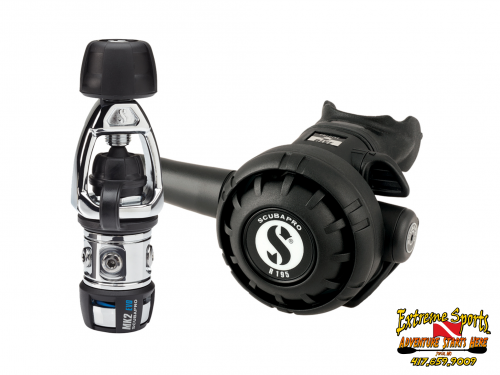
mk11 w/ c370
This is one of our best selling entry regulators! The MK11 is a single diaphragm 1st stage and it is paired with the lightweight and compact C370. The C370 has adjustability and is balanced.
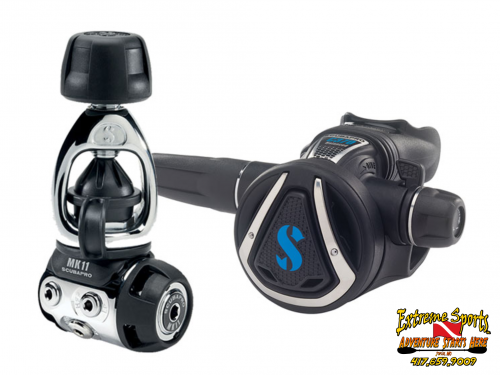
mk19 evo w/ D420
The MK19 evo is a newer 1st stage consisting of an environmentally sealed dual-diaphragm design with a turret! The turret on the bottom allows for ease of hose configuration and streamlining. The D420 is a great second stage design for photographers as it has a large exhaust-tee that “forces” the bubbles behind the diver and keeping those bubbles away from a camera lens or viewfinder.
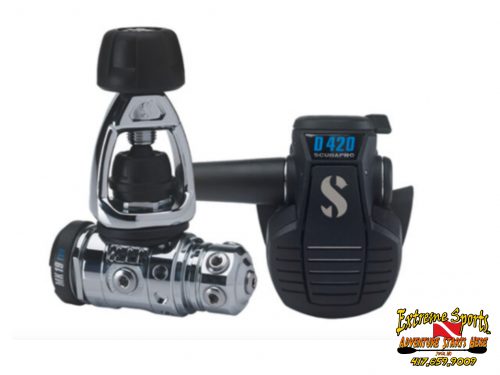
mk25 evo w/ s620ti
Here is another top selling regulator combo! The MK25 Evo paired with the S620ti. Previously we discussed how the MK25 is a high flowing machine, but it is combines with the lightweight S260ti. The “ti” in the name meaning titanium; this 2nd stage has a titanium inlet making the inlet corrosion resistant. It also has an extremely compact body making it great for travel and performance.
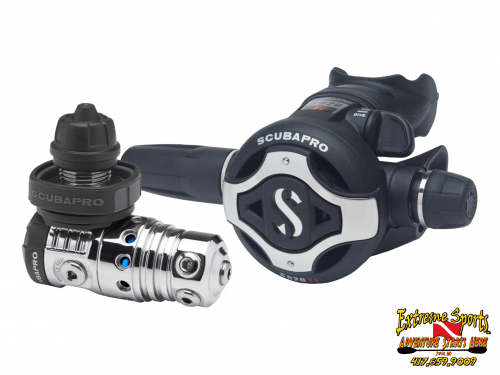
mk25T evo w/ s620Xti
This is the avid travelers dream. One word… titanium. The MK25T first stage is a titanium built machine. Keeping the same characteristics as the standard with extra benefits. This regulator weighs in at 1.9 pounds; roughly 33% lighter than the standard MK25 Evo / S620ti
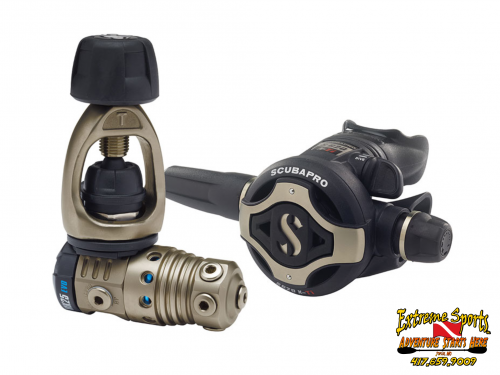
Well, that is a LOT of information for just one piece of Scuba equipment. That is why these blogs are here, for us to discuss what the Scuba industry lacks to explain.
If you’re still not sure on what regulator to look for, give us a call: 417-659-9009
For any questions or concerns, leave a comment below. We would love to hear your opinions on regulators!
other blog posts:
Selecting the Right SCUBA Mask
it’s just important! What is the most important piece of...
Read MoreTop Gifts for Scuba Divers
Our List Scuba divers always have a need for something...
Read More1st Stage Turrets – Why?
Jumping back in history Looking back in time at Scubapro’s...
Read MoreMeet the Scubapro Caravan Bag
before the caravan Through out the years I have traveled...
Read More